(Bush) Tea Plot – A Decolonial Patch for Mill Workers

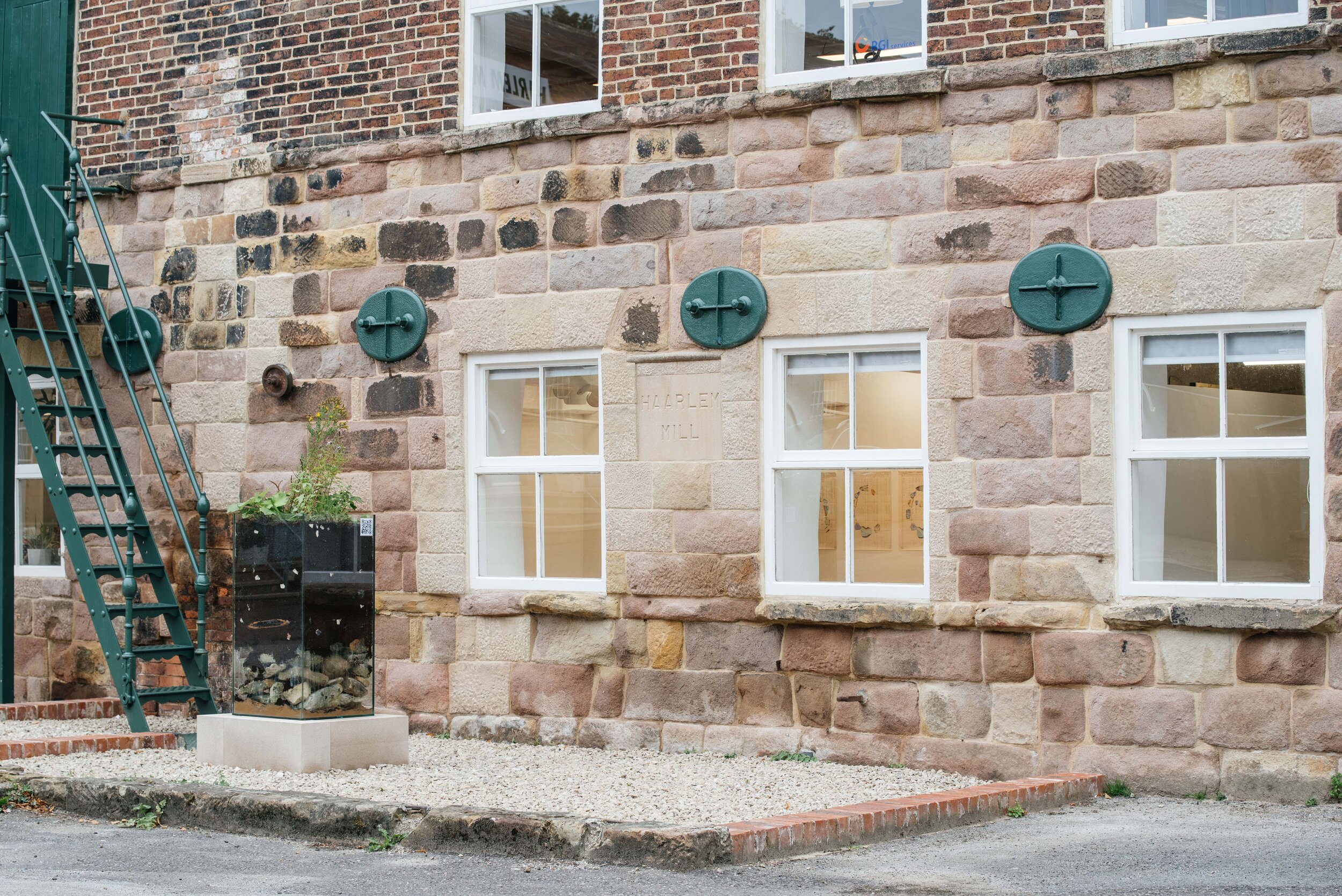
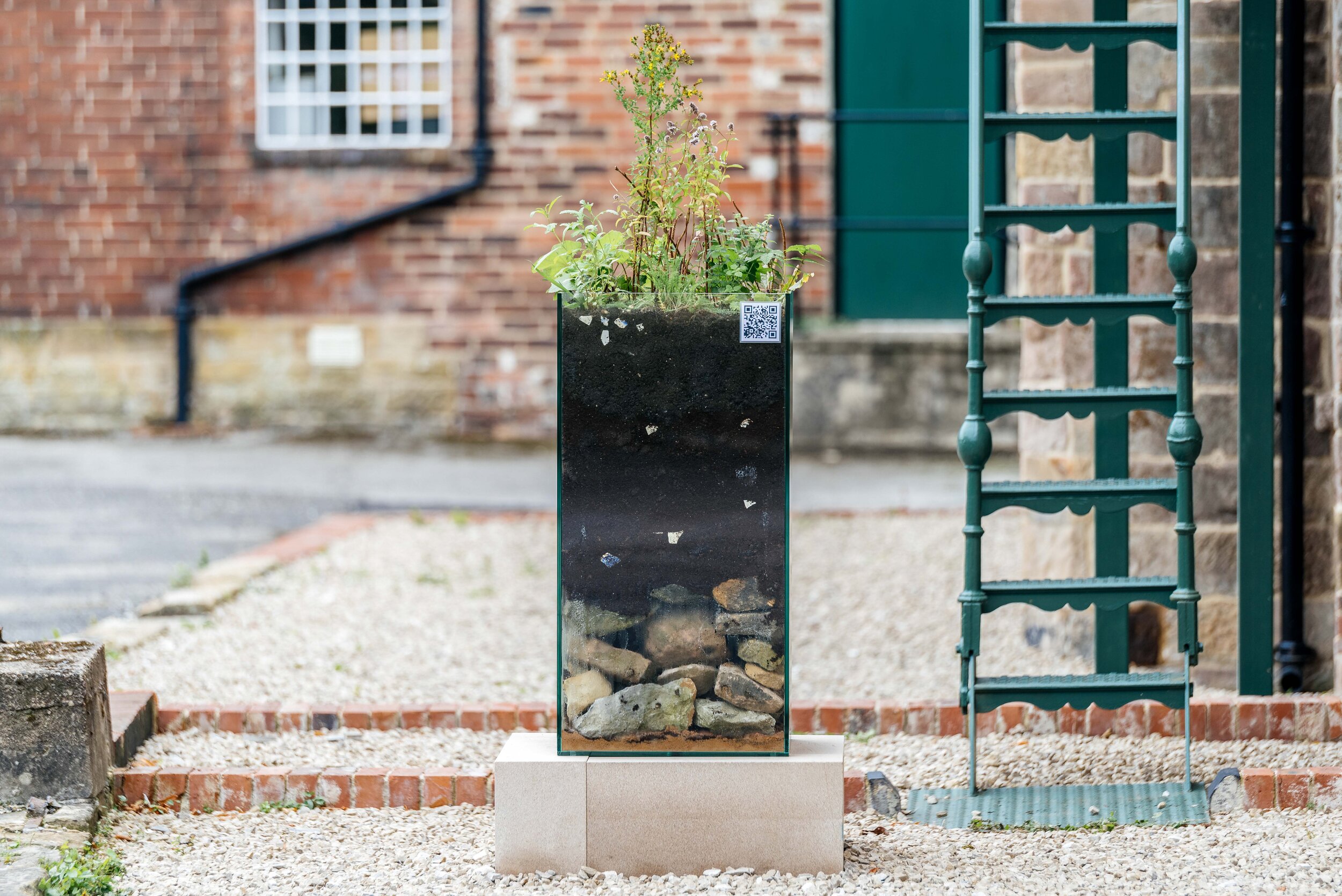
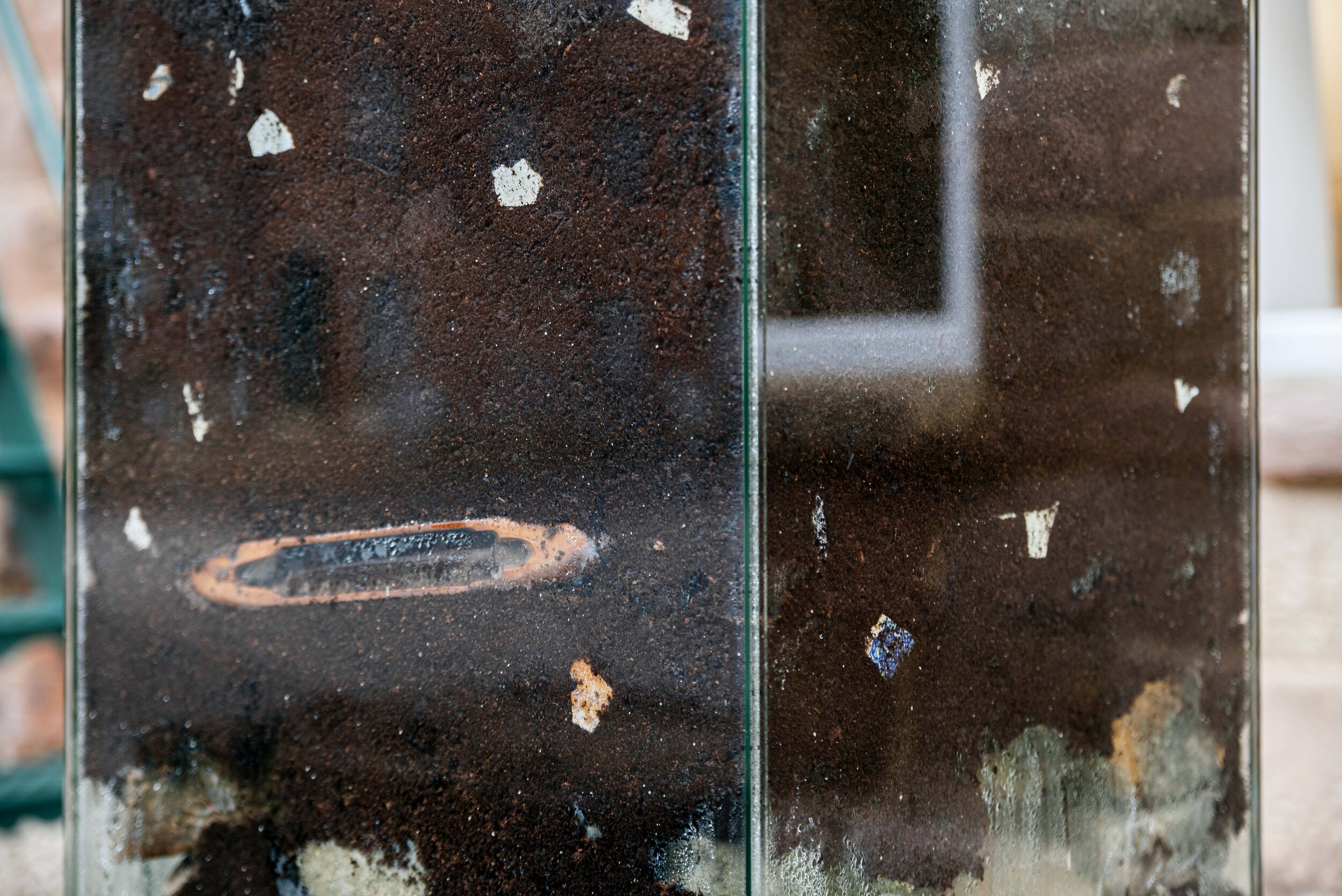
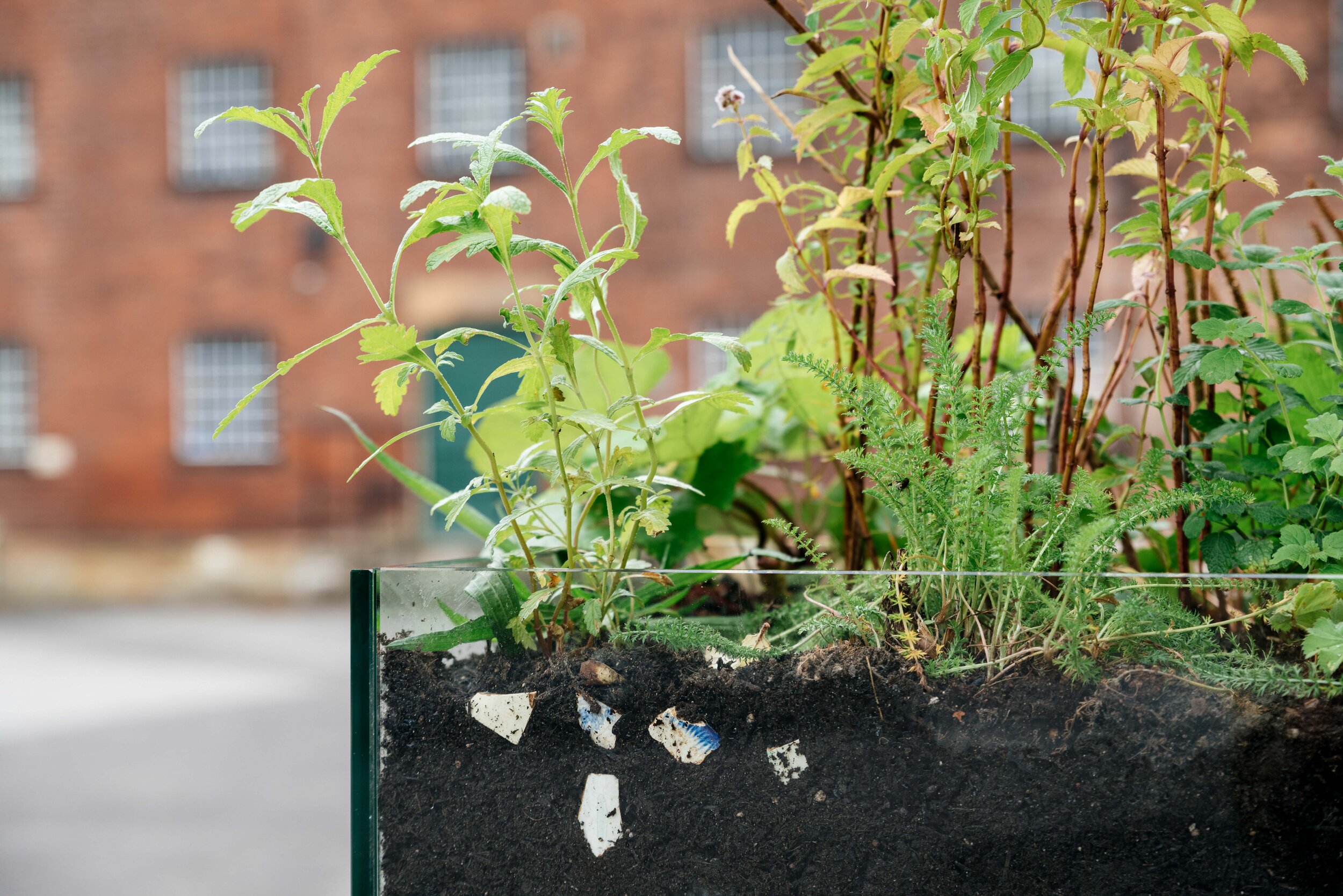
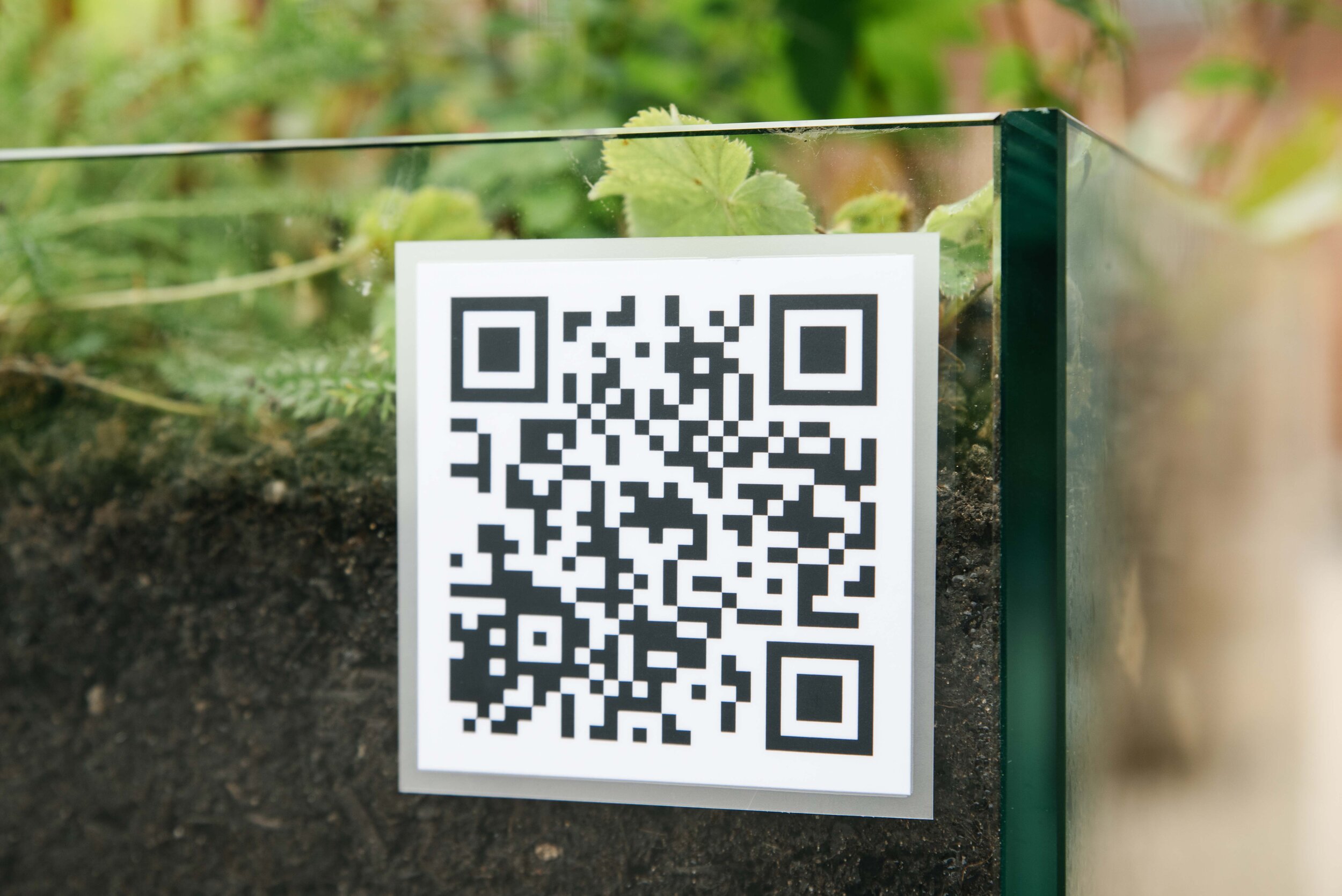

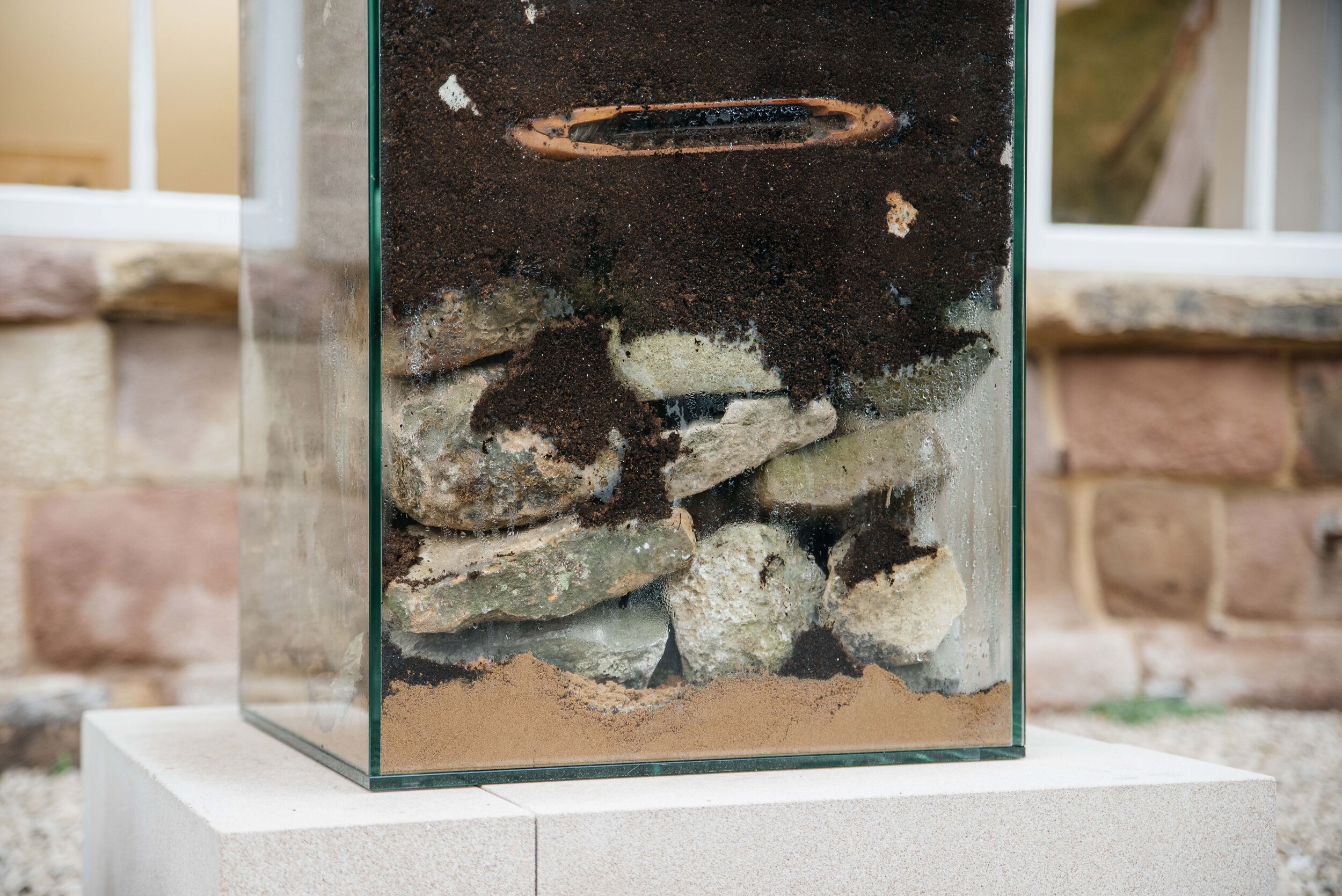
Title
(Bush) Tea Plot – A Decolonial Patch for Mill Workers
Year
2020
Medium:
Glass vitrine
Coral stone base
Limestone
18th + 19th century porcelain and clay sherds
Soil and wild botanicals
Wooden bobbin
Dimensions:
N/A
Credits:
Renee Brailsford (garden designer collaborator)
Glennie Kindred (guerilla gardener collaborator)
Collector:
Collection of artist
PRESS
The Guardian (Sept. 2020)
Barbados Today (Sept. 2020)
The Learned Pig (Sept. 2020)
Haarlem Artspace is a gallery focussed on contemporary rural art. It is located in a building that was initially a cotton mill, built in the late 18th-century in Wirksworth, in the north of England–the birthplace of the Industrial Revolution. The gallery commissioned a new work in response to this site. I was inspired by it’s former life and understood a historical connection in that Barbados, as a British slave colony, would have exported cotton to the UK. The cotton mill employed children from as young as seven, along with an older labour force, who toiled in unsafe and harsh work conditions, sometimes contracting illnesses related to processing the cotton. Cotton fluff was in the air and workers inhaled it.
My new sculptural work, (Bush) Tea Plot – A Decolonial Patch for Mill Workers, expands on my 2019 permanent installation at the EBCCI, UWI, Cave Hill, (Bush) Tea Plot - A Decolonial Patch. The installations link to shared industrial and colonial histories on both sides of the Atlantic; exploring environmental resilience, regeneration, and healing through the use of wild plants before medicine was widely available.
The structure of the work includes a one-metre tall glass vitrine fitted inside a limestone plinth harvested from a nearby limestone quarry in Wirksworth. The transparent vitrine reveals the soil profile. Embedded in the soil are a wooden bobbin once used in the cotton mill and a layer of 18th and 19th-century sherds I found in the fields here at Walkers Dairy in Barbados. The collection includes pearlware, creamware, stoneware, and transfer-printed whiteware. The repatriation of these artifacts acknowledges their likely origin back to the Staffordshire potteries, located near Wirksworth. Initially shipped out to Barbados as ballasts on ships and used by both the settler-colonial class and the enslaved population, they have made their way back by DHL courier shipping, more than two hundred years later.
Growing out of the top of the vitrine is a selection of wild botanicals selected for their healing properties such as Coltsfoot, Yarrow, Meadowsweet, Lemon Balm, Mint, Elderberries, Lady's mantle, Feverfew, Common and Broadleaf plantain, St. John’s Wort and Vervain. Cognisant of a workforce including women and young children adversely affected by substandard cotton mill labour conditions, this living apothecary acknowledges those who toiled and were afflicted with poor health. Traditionally held to have medicinal qualities, this collection of plants is selected in recognition of cotton mill worker ailments including spinner’s phthisis or pulmonary tuberculosis and upper respiratory problems among others.
Thanks to Glennie Kindred and Renee Brailsford, Wirksworth based guerilla gardener and garden designer respectively, whose wisdom and knowledge of the local wild botanicals have made this work possible.